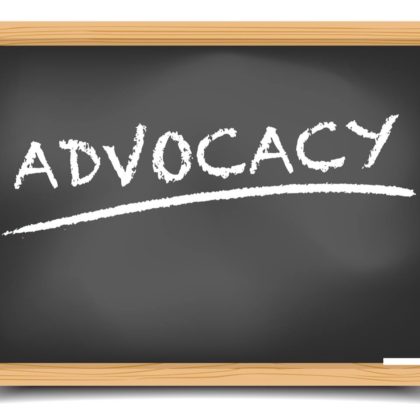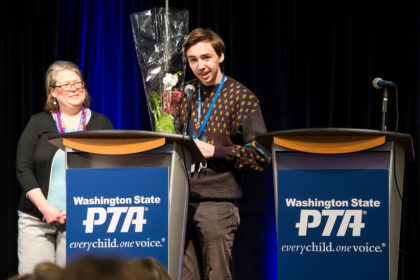Guest post provided by 2022 WSPTA Student Advocate award winner Kellen Hoard
 At the beginning of every school year, I encourage students I meet of all ages to be on the lookout. I tell them to pay attention to their surroundings—at school, in their town, and across their state. I tell them to listen closely to their peers.
At the beginning of every school year, I encourage students I meet of all ages to be on the lookout. I tell them to pay attention to their surroundings—at school, in their town, and across their state. I tell them to listen closely to their peers.
What, exactly, are they looking and listening for?
I tell them to look and listen for two things: what they wish worked better, and what they think would be preferable instead. And what I have found, time and again, is that by encouraging students to simply consider those two concepts, they begin to think more critically not just about what needs to be done to improve their community at various levels, but also what role they can play in making that improvement. They begin to speak up on behalf of not just themselves, but others. They become advocates, in the best sense of the word.
As we enter the 2022-2023 school year, if you are a parent, I encourage you to have a similar conversation with your student. That conversation will look different depending on their age, but the simple act of verbally expressing support—empowering your student to be more attentive to the needs of the community, whether they be more lockers or a new crosswalk or a new law—will pay dividends. (Important note: I have found, through experience, that it is not possible to guide your student toward a certain issue you are passionate about. It is crucial that you simply encourage them to speak up if an issue arises that they care about.)
If your student is at the elementary level, begin a conversation with your student about the basics. They and their peers have the right to feel comfortable, safe, and respected at school; if they don’t, it is both admissible and important to speak up. If your student is at the middle school level, work with them on expanding their scope beyond the school. Point out that they are part of a broader community in their district, city, county, and state, and that similar concepts of comfort, safety, and respect apply for residents of those successive levels. Encourage them to be proactive, not just in seeking out how they can help others and raising awareness of issues, but also in contributing to the solution using what unique intellect, perspectives, and skills they possess.
If they are in high school, the opportunities for advocacy expand significantly. Encourage them to seek out organizations (both school affiliated and non-affiliated) which align with their interests and through which they can amplify any existing advocacy. Work with them to realize what unique benefits accompany being ages 14-18 when advocating at various levels. Help them identify paths through which they can continue to make change throughout the school year; the choices are often more extensive than they might think (one often overlooked route of effective advocacy: testifying in a state legislative committee or city council meeting).
I am leaving this blog post intentionally vague because the paths of advocacy, as I saw them through my time in school, are virtually limitless. At the end of the day, the most critical thing is that your student understands their real power (and believe me, they have it; officials at all levels are often more responsive to youth than adults), that they know they can and should use that power to advocate on behalf of the community, and that they feel you support them in speaking up. As we enter this new school year, it’s the perfect time to begin. If you have any questions, please feel free to contact me at kellenhoard@gmail.com.
 Kellen Hoard is a recently graduated high school student from Kirkland, Washington. He previously served as Chair of the Legislative Youth Advisory Council—the official youth advisory body to the state legislature—where he spearheaded the writing and passage of a law which expanded mental health support access to 1.1 million students around the state and helped nearly 200 organizations and 57,000 youth learn about advocacy. He has worked extensively with successful political campaigns and advocacy nonprofits. For his work in politics and advocacy, he has been recognized as the Washington State PTA Outstanding Student Advocate of the Year, was selected as 1 of 7 Harvard Institute of Politics Emerging Leaders nationally, and was selected as a Cameron Impact Scholar, for which he received a 4-year full ride to any college.
Kellen Hoard is a recently graduated high school student from Kirkland, Washington. He previously served as Chair of the Legislative Youth Advisory Council—the official youth advisory body to the state legislature—where he spearheaded the writing and passage of a law which expanded mental health support access to 1.1 million students around the state and helped nearly 200 organizations and 57,000 youth learn about advocacy. He has worked extensively with successful political campaigns and advocacy nonprofits. For his work in politics and advocacy, he has been recognized as the Washington State PTA Outstanding Student Advocate of the Year, was selected as 1 of 7 Harvard Institute of Politics Emerging Leaders nationally, and was selected as a Cameron Impact Scholar, for which he received a 4-year full ride to any college.